Two days in magnificent Seville
We were a group of six girls on Erasmus that decided to visit one of the most beautiful and well-preserved historical cities in the south of Spain in January. We planned this trip around three months before going there and already had decided what to visit in Seville, but it truly surprised us with its history, magnificent old town and its surroundings.
Seville is one of the oldest cities in the world that still thrives until this very day. It is believed to be founded by Hercules when he was travelling to the strait of Gibraltar and the Atlantic Ocean. Later, the Romans overtook the city and called it Hispalis turning it into one of the greatest markets in the Roman province of Hispania. After that, the Moorish people took control over the city around the eight century and build the Royal Alcázar of Seville, as well as some of the main sections of the Giralda or the tower of the Cathedral of Seville.
Finally, the city of Seville was undertaken by the Christian King of Castile, King Ferdinand the third, during the conquest of Andalusia. As the legend goes, the city was attacked for fifteen months until it surrendered. After that, the Christian kings transformed all of the Muslim buildings as per the Christian faith. Nowadays, this can be easily noticed as most of the historic buildings have this strange Gothic, Arabic and Christian architectural mixture that is absolutely astonishing.
How to get to Seville?
Since we were in Faro, where we spend two days exploring the Algarve region in Portugal, we decided to catch a bus to Seville. The cheapest option was the Flix bus, which cost us around six euros to get to Seville. Thus, in Faro we had to go to the bus station, that is also next to the train station and wait there in front of it for our Flix bus. Our journey lasted around two, almost three hours to get to Seville. The bus left us at Seville’s bus station, which is around 10 minutes away from the center of the city of Seville. Overall, it was a very nice ride and the bus was not full, thus we could sit next to each other.
Another way to get to Seville is by plane, which I would say is the fastest one and also cheap. Unfortunately, there wasn’t a direct flight to Seville from Faro, so that’s why we decided to take the bus. However, you can get a direct flight from Lisbon, Porto, Madrid, Barcelona and almost any other city in Europe that has an airport.
Although, when we were going back to Porto, we got a flight from Seville’s airport for around fifteen euros, which was quite cheap and the flight took around an hour. Thus, it was quite a pleasant experience.
What is the weather like in Seville in January?
The weather is Seville in January is sunny and quite warm, but can be quite chilly in the evenings. However, I would advise you to take warm clothes and a jacket, as it can be also quite unpredictable.
Overall, the weather in Seville is nice all year round and whenever you go you can expect lots of sunny and warm days. Although, I heard from locals that during the summer the heat is sometimes unbearable, thus the best time could be the spring or autumn months.
What food and drinks to try in Seville?
One of the foods you should definitely try is paella or paelha as Spanish people call it. Usually, they offer it with seafood, chicken or other types of meat or even without meat. However, for me, the best paelha is the one with seafood. Absolutely, delicious.
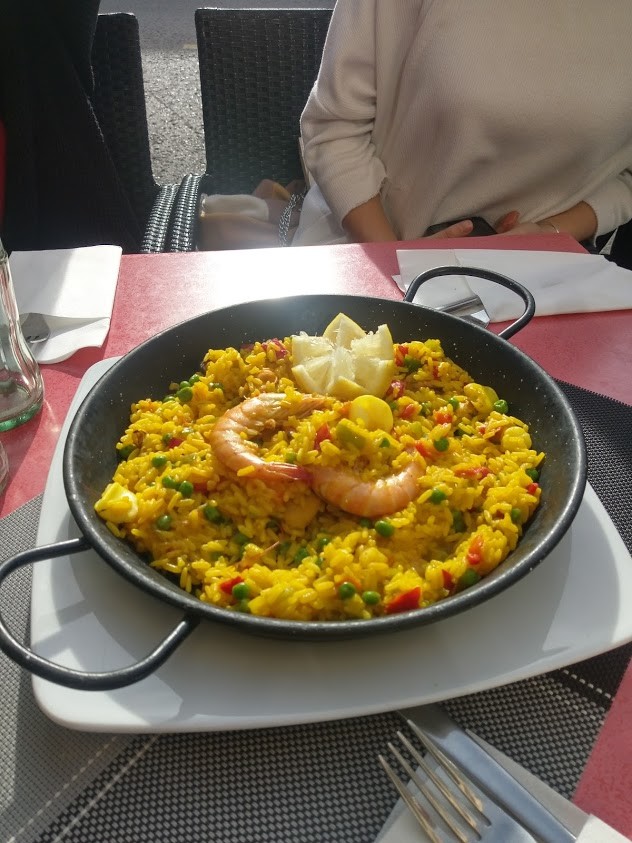
Another famous food option in Seville is the tapas, also known as little sandwiches. We tried them in a restaurant called Orio near the Royal Alcázar of Seville and also at the 100 Montaditos, which is like a snack bar, where all the sandwiches cost 1 euro and you can pick from a huge list of sandwich options. Thus, I would totally recommend trying the 100 Montaditos, it offers one of the best sandwiches in Seville.
If you want to fully blend with the Hispano-Moorish culture, you can go to a shisha bar, as we did. Ordering a shisha is not expensive and is quite a pleasant experience. We went to the Bámbola Cafe Teatro near the Alameda de Hercules and got a shisha for fifteen euros.
While in Seville, I would advise you to try their Tinto de verano drink, which is a wine with ice and lemon in it. It is a perfect cold drink for the hot summer days. However, if you want to get wine and drink it at your place, the best we found in the stores was Albali, which is a white Spanish wine and was pretty nice.
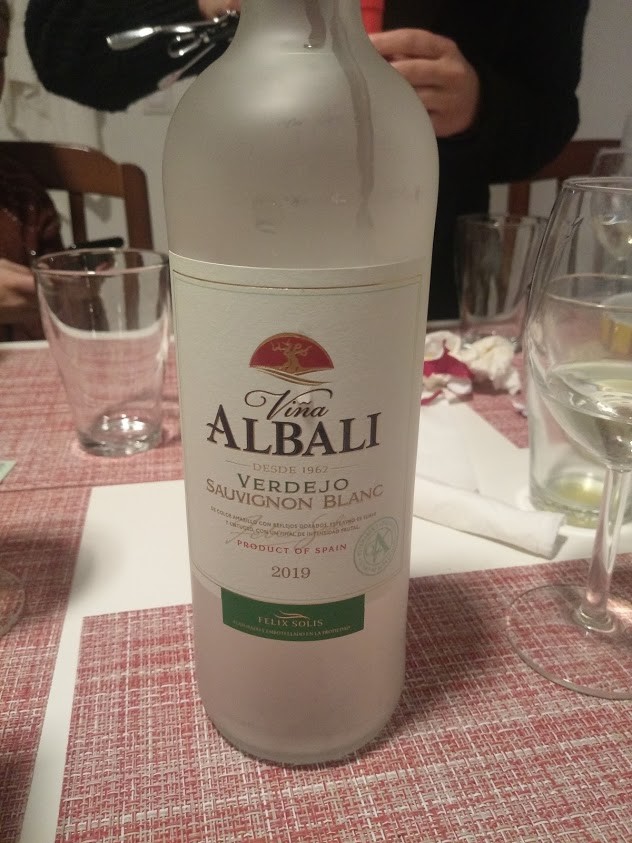
Is the Free Tour of Seville worth it?
Yes, it is totally worth it! I would recommend it to everyone that wants to know more about this amazing city. The guides are giving in-depth information about the city and its historical monuments and are super helpful when you approach them to ask questions about places.
Our tour started at 11 am in the morning at Iglesia Colegial del Salvador and ended around 2 pm in the afternoon near the Royal Alcázar of Seville. During the tour, we stopped in a nice pub that offered drinks, food and places to relax. At the end of the free walking tour, everyone was free to leave tips for the guide.
Day One in Seville
On the first day, we started with the Seville Free Walking Tour and walked around the city and its main landmarks. Our guide was nice enough to share with us important information about the city, tips for visiting the landmarks and also showed us hidden spots in the city. In addition to that, she advised us to purchase the tickets for the Seville Cathedral at Iglesia Colegial del Salvador, so that we can get them with our student discount and avoid waiting to get into the cathedral.
Roman Columns at Mármoles Street
The Roman Columns are an almost forgotten spot in Seville and not many people know the story about it. Back in the days, there were six columns belonging to a Roman temple, but one of them that was picked for the Royal Alcázar of Seville was broken on its way. The other two were successfully installed at Alameda de Hércules in the sixteenth century and can still be observed there. The three remaining columns are still in the center of Seville in the neighbourhood of Santa Cruz, which is the old Jewish neighbourhood.

Santa Cruz neighbourhood in Seville
Santa Cruz is known as the old Jewish neighbourhood and as the richest part of Seville until the fifteenth century when the Jewish people were expelled from the city. After that, the quarter became uninhabited, but only until the French occupation in the eighteenth century. Nowadays, as per locals, the Jewish people are living in the outskirts of the city far away from their previous homes.
However, the old neighbourhood is a shining gem in Seville. It has nice narrow cobbled streets with tiny shops and restaurants. Santa Cruz also attracts its visitors with its lovely colours all around and most of its historical spots as the Roman Columns at Marble street.
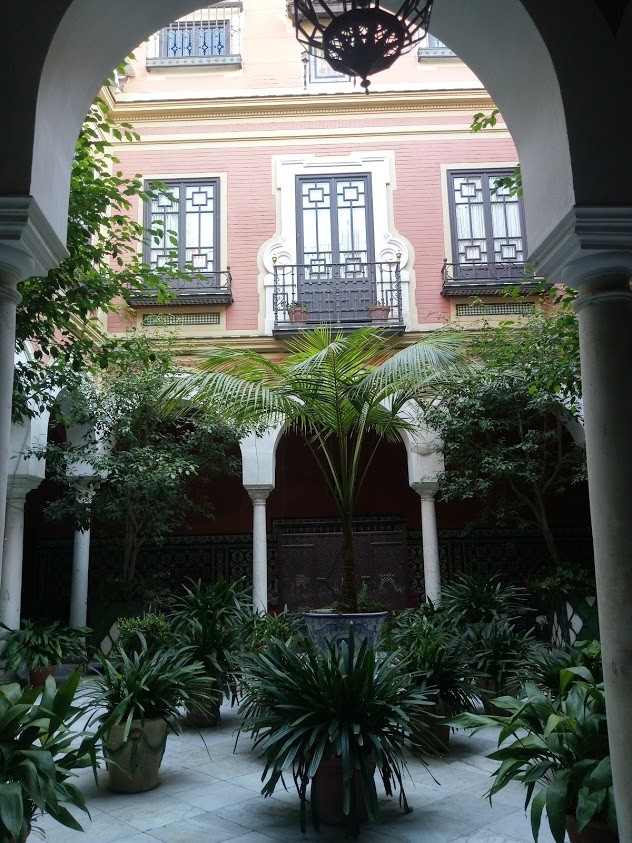
To start your walking tour around the Santa Cruz you can first reach the Plaza Virgen de los Reyes that is next to the Cathedral of Seville. From there you can continue straight and you will be able to enjoy the old city of Santa Cruz. Furthermore, I would advise you to see for hidden gardens or places to rest there, because there are lots of them. Plaza de Santa Marta is one of those secluded and quiet places in the heart of Seville and the beginning of Santa Cruz. It is exactly next to the Plaza Virgen de los Reyes and behind the church there. Thus, it is easy to find and reach it.
Royal Alcázar of Seville
The Royal Palace of Seville was established around the tenth century by the Moorish people or more specifically the Taifa kings that took control over the city around the eight century. It was built entirely in the Moorish architectural style. Then, when the Christian kings arrived during the times of the Reconquista they reconstructed parts of the palace with Gothic and Romanesque elements, which can be seen today in many of its rooms. After that, Renaissance and Baroque elements were added to the palace making it one of the most important palaces on the continent that perfectly preserved different architectural styles.
The Royal Alcázar of Seville is absolutely astonishing and unbelievably well-preserved. To enter the palace, we went from Patio del León, which is the original entrance of the palace leading to the numerous rooms entirely decorated with tiles. An interesting fact about the palace’s tiles is that there are two types of tile in it - majolica and arista. The difference between the two is that the majolica type of tiles is flat and are full of drawings while the arista ones are convex ends or figures.
After that, we went inside to observe the beautiful tiles of the rooms that were entirely covered in them. To me, they sort of looked hypnotic. In one of the rooms, there is a beautiful dome decorated with lots of different tiles creating the illusion that it is covered with gold. Then, we ended in the Patio de Levies that was a big indoor garden from which we could access any room of the castle.
Then, we continued to the Jardim del Principe from where we could access the Palacio del Rey Don Pedro. The rooms of this palace were bigger than those of the Casa del Asistente and had little terraced rooms in them. From there we could visit the Garden of the Maidens, that led us to Palacio Gotico. There we found the Los Baños de Doña María de Padillathat belonged to the María de Padilla who was believed to be the lover of King Peter of Castile. The baths were filled only with rainwater and are well-preserved to this very day.
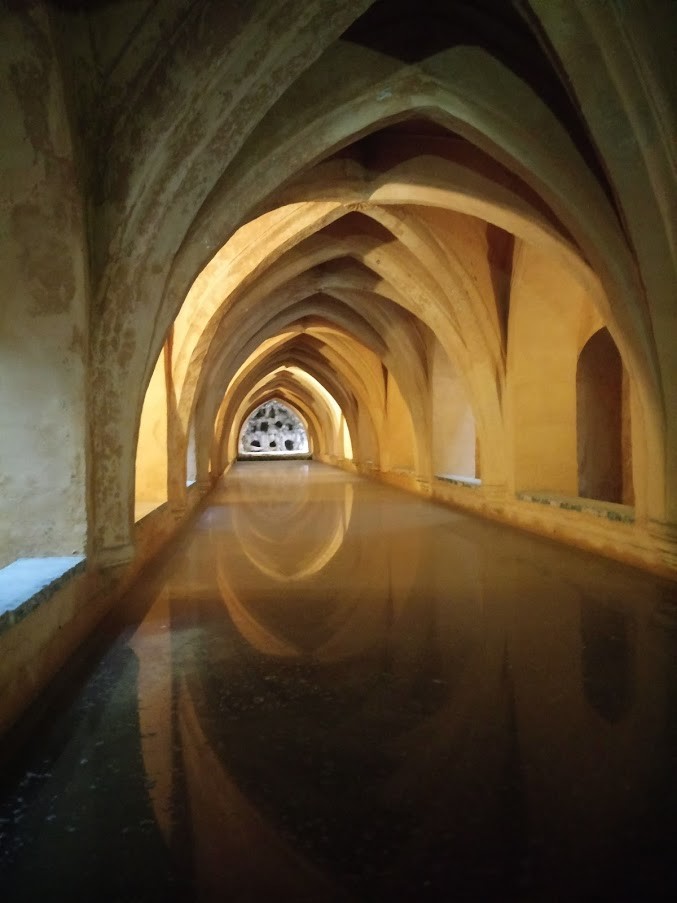
From there, we reached the Estanque de Mercurio that was a pool with the statue of Mercury in the middle of it and an artificial waterfall. Just behind this pool, we went to find a way to go up on the wall from where we could see the gardens of the palace. The entrance to the stairs was exactly next to the entrance of the Estanque de Mercurio, just a bit to the left. From the wall of the palace, a beautiful view was revealed in front of us. Tall palm trees, lots of green bushes, fountains, narrow pathways and the Pavillion of Carlos V.
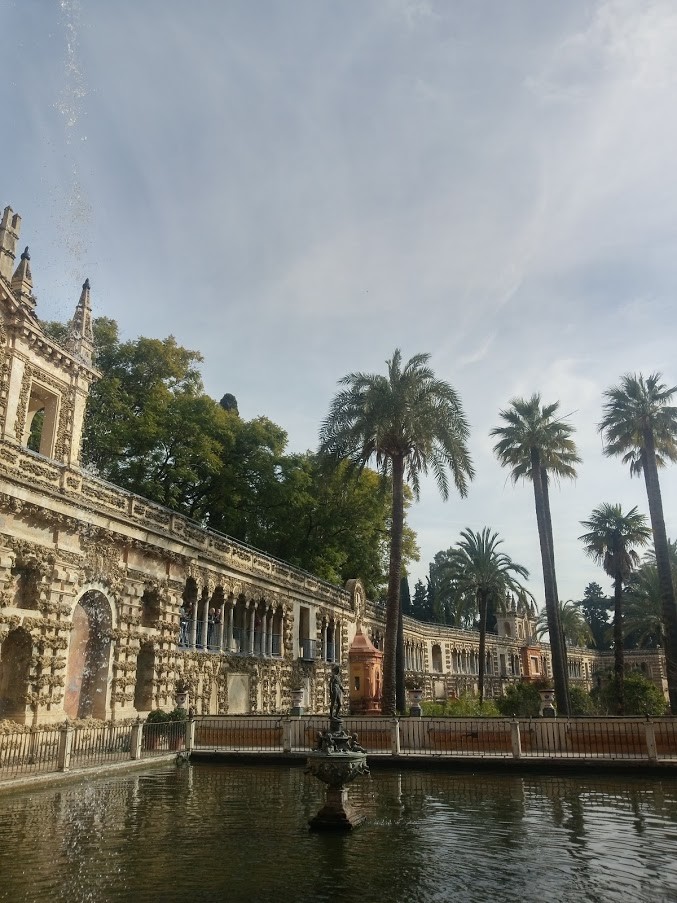
Later, we visited the Marquis of la Vega-Inclán's Garden, the Poets' Garden, the Labrinth Garden, the English Garden and the Grutas de las Sultanas. The gardens were full of birds, peacocks and ducks running around. Also, they were full of lush vegetation everywhere, which only added to their beautiful southern outlook.
The price to enter the Royal Alcázar of Seville was three euros if you are a student and under 26 years old. However, the regular price of the palace is 12.50 euros.
General Archive of the Indies
The General Archive of the Indies is next to the Royal Alcázar of Seville and is mostly known for keeping the archives and maps from the fifteenth century about Spanish history and its colonies. Unfortunately, we couldn’t visit it, as it was closed, but it is definitely on my list for my next visit here.
Metropol Parasol
Finally, we went to Metropol Parasol, which is a modern building in Seville from which you can overlook the city or simply watch the sunset. From afar it kind of looks like a couple of giant mushrooms in the middle of the city, thus you will easily recognize it. The tickets can be bought from the underground level and cost five euros to get up there. While waiting on the line to get up we also saw the famous Roman and Moorish ruins in the Antiquarium.
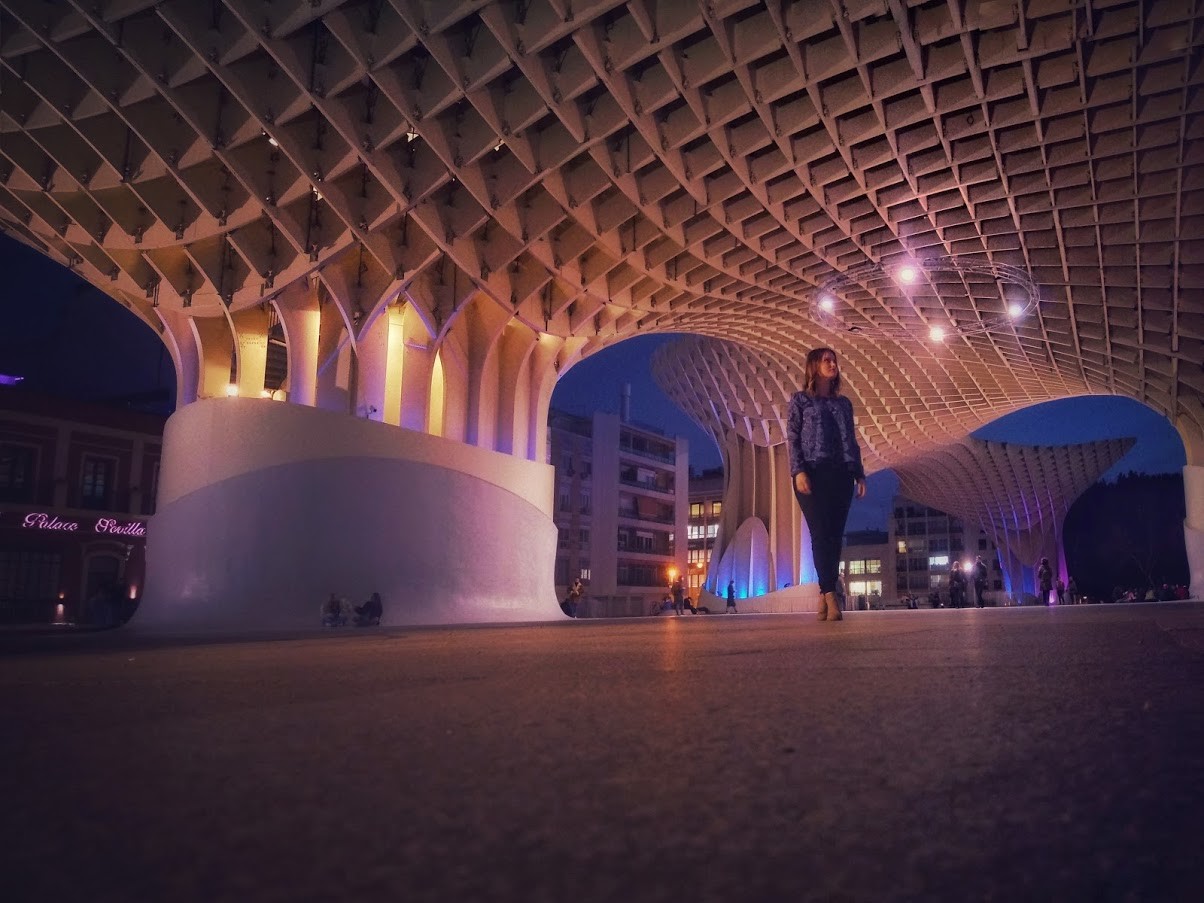
Day Two in Seville
As advised by our guide the previous day we first went to Iglesia Colegial del Salvador to buy our tickets for the church and also the Cathedral of Seville. The price of the combined ticket was five euros and was for students and people under the age of 26 years old.
Iglesia Colegial del Salvador
The catholic church is absolutely stunning on the inside. It has a huge altar in the middle and lots of tall altarpieces entirely covered with gold and ornaments representing various scenes from the bible. The fascinating thing about this church is that if you use the other entrance you will end up in a secluded garden with a small fountain and tangerine trees around it. Absolutely amazing!
Cathedral of Seville
The famous Cathedral of Seville is known for being the third-largest church in the world and also the largest Gothic church too. It is also a UNESCO World Heritage Site, along with The Royal Alcázar of Seville and General Archive of the Indies.
While the Moorish people were ruling the lands here, they built a mosque during the twelfth century on the place where the cathedral sits today. Nowadays, the remains of the mosque can be seen next to the exit of the cathedral, where there are still some Moorish arches left.
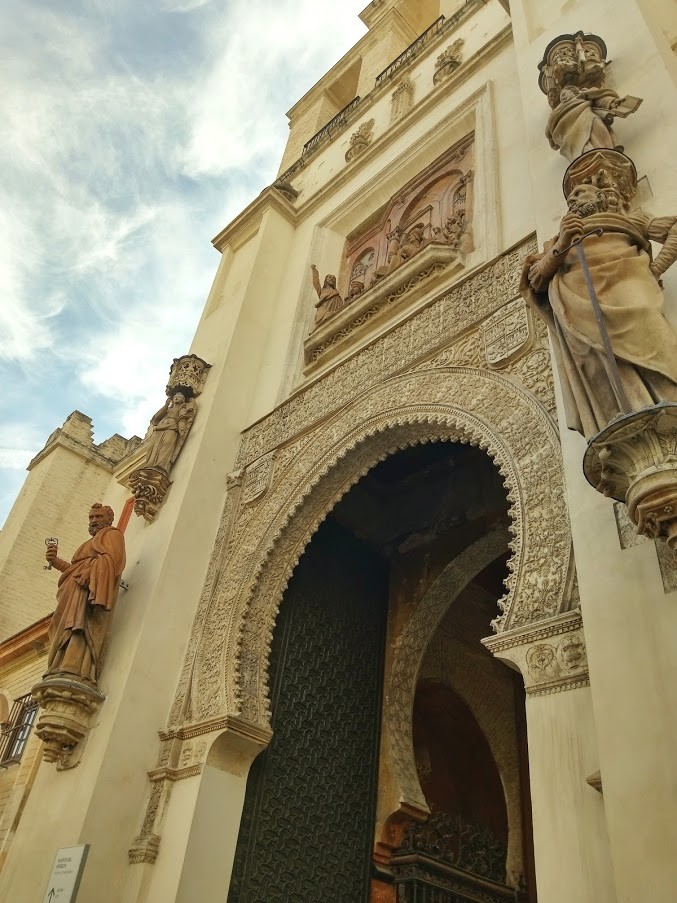
Later, during the Reconquista, the mosque was transformed into a cathedral by King Ferdinand the Third. Then, the construction of the cathedral continued during the Renaissance period on its chapel. Its notorious tower was finished around the sixteenth century and was considered one of the tallest building around.
There is a very interesting story about the chains that surround the cathedral. It is related to the times of the Reconquista and when the Christian Kings took over the place. Once they besieged the city and took the control they built the cathedral and around it, they put huge chains that you can see today. As per the story, the chains were put, so that they can keep the sinful people away from the cathedral. That way only the good and faithful people could go inside and pray.
Once we went inside the cathedral we were absolutely stunned by its greatness. It was absolutely marvellous. At the beginning of the cathedral, we saw the High Altar, which was absolutely unbelievable. It was as high as the church itself and made out of gold. Next to it was the Choir and the Chapel of Our Lady Virgin of La Antigua. On the right side was the tomb of Christopher Columbus.
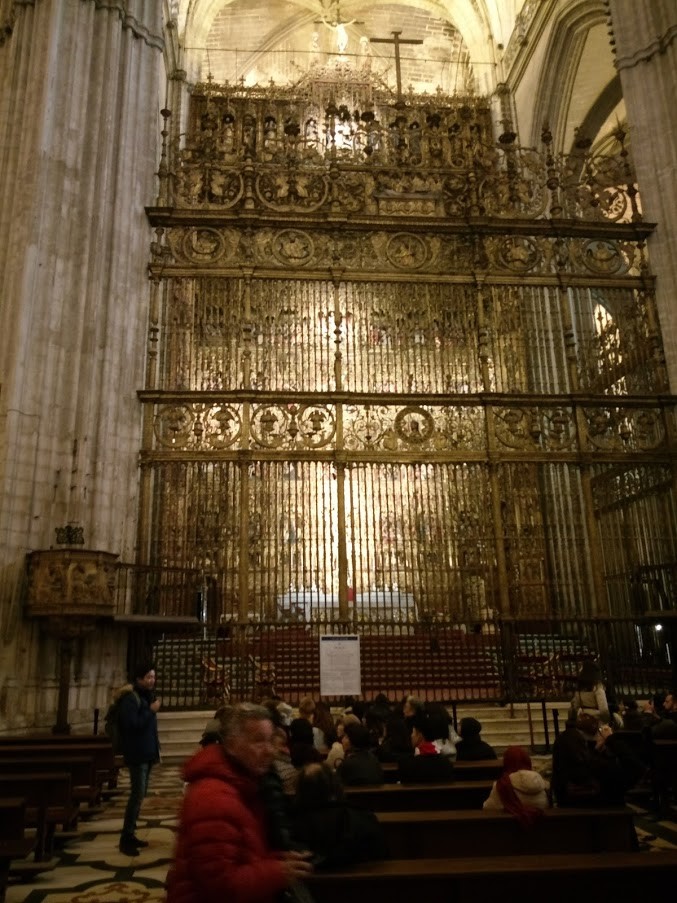
We roamed around for a bit enjoying this national wealth of Spain and then went outside to the Orange Tree Courtyard. Then, we went to the cathedral again, but this time went to the left, so we can reach the entrance for the Giralda tower. The tower does not have stairs, which makes it easier for climbing and also fast. The pathway to the top is wide enough so that three or four people can walk side by side, thus in no time, we were up. From there we could see lots of landmarks in Seville from above.
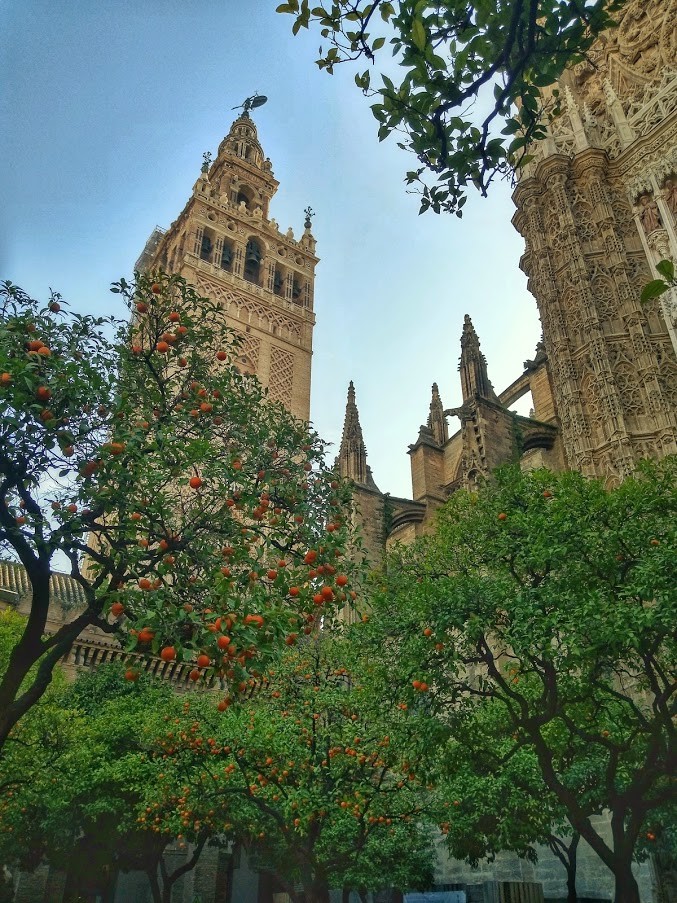
One of them was the Plaza de Toros or the Arena of Seville, where bullfights were taking place. Closer to us was the Torre del Oro, which was a watchtower constructed in the thirteenth century and used as a prison during the fifteenth century. Finally, we went down and went straight to Plaza de España where we were planning to finish our day.
Plaza de España
While walking to Plaza de España we crossed through the Palacio de San Telmo, which was a university for navigators in the past and now it served as the presidency of the Andalusian Government.
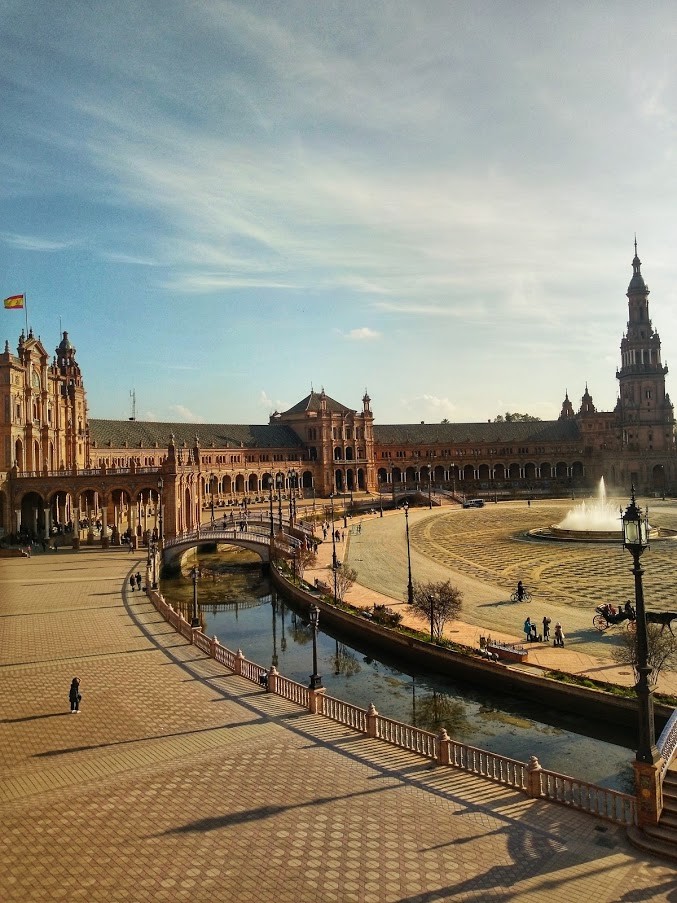
Then, we kept walking straight to Plaza de España until we reached its colourful and sunny square. The square of Spain was built at the beginning of the twentieth century and its main purpose was to show Spain’s technological and industrial exhibits. The most interesting part of the square for me was the separate corners covered in tiles for each Spanish region that was accompanied by a map of the region with its biggest cities. Another interesting fact about the square of Spain is that the four bridges of the square represent the old Spanish kingdoms.
In the end, we headed to the Park Maria Luiza to explore it a bit, before we went to the airport to catch our flight back to Porto.
Photo gallery
Content available in other languages
- Español: Dos días en la magnífica Sevilla
Want to have your own Erasmus blog?
If you are experiencing living abroad, you're an avid traveller or want to promote the city where you live... create your own blog and share your adventures!
I want to create my Erasmus blog! →



























Comments (0 comments)